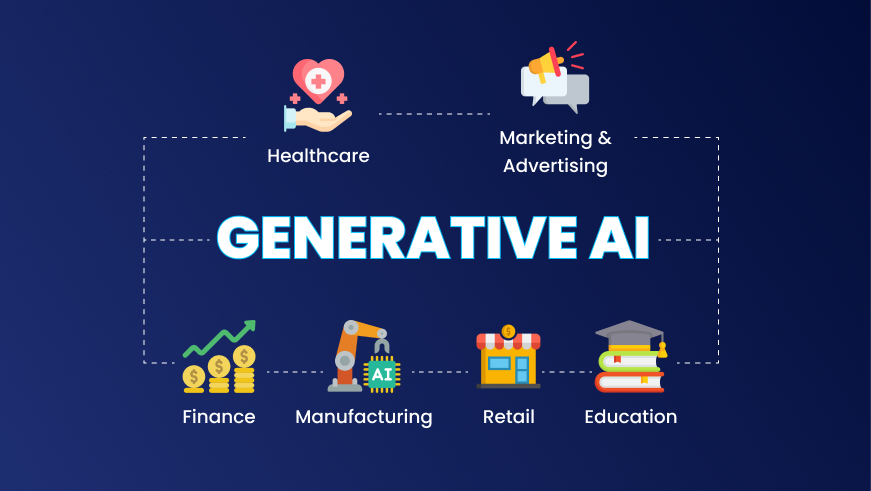Best Practices for Training Generative AI Models

As generative AI technology continues to evolve, organizations increasingly recognize its potential to revolutionize various industries, from creative arts to scientific research. Training generative AI models, however, is not a straightforward process. It requires careful planning, the right tools, and a deep understanding of both the technology and the data involved. Here are some best practices for training generative AI models, with insights into how Geniusee, a leader in software product development services, can assist in this complex journey.
Understand Your Objectives
Before diving into the technical aspects of training generative AI https://geniusee.com/generative-ai-development models, it's crucial to define clear objectives. Ask yourself:
- What problems do you want the AI to solve?
- What specific outputs are you aiming for?
- Who will be the end users of the generated content?
By clearly outlining your goals, you can tailor your training process to meet those specific needs, ensuring that the generative model aligns with your business objectives.
Choose the Right Data
Data is the backbone of any AI model, especially generative ones. Here are some key considerations when selecting data:
Quality Over Quantity
While large datasets are often beneficial, the quality of the data is more important than sheer volume. High-quality data that accurately represents the desired outputs will yield better-trained models. Ensure that your data is clean, well-structured, and relevant to the tasks your AI will perform.
Diverse Data Sources
For generative models, diversity in training data is critical. A varied dataset helps the model understand a wide range of contexts and styles, leading to more versatile outputs. For example, if you’re training a model for creative writing, include various genres, tones, and styles.

Ethical Considerations
Pay attention to the ethical implications of your data. Ensure that the data used is free from biases and does not perpetuate harmful stereotypes. Ethical training practices are essential for building trust and accountability in AI systems.
Select the Right Architecture
Choosing the right model architecture is another critical step in the training process. Depending on your specific objectives, different architectures may be more suitable:
Transformer Models
Transformer architectures, such as GPT-3, have gained popularity for their ability to generate coherent and contextually relevant content. These models are particularly effective for tasks involving natural language processing.
Variational Autoencoders (VAEs)
If your goal is to generate new data instances that are similar to your training set, consider using VAEs. These models are excellent for tasks like image generation or data reconstruction, as they learn the underlying distribution of the data.
Generative Adversarial Networks (GANs)
GANs consist of two neural networks—the generator and the discriminator—that compete against each other. This architecture is particularly effective for generating high-quality images and other complex data types. However, training GANs can be more challenging and may require a deeper understanding of neural networks.

Optimize Training Procedures
Once you've selected your data and model architecture, it’s time to optimize your training procedures. Here are some strategies to consider:
Hyperparameter Tuning
Hyperparameters significantly impact model performance. Experiment with different learning rates, batch sizes, and training epochs to find the optimal settings for your model. Tools like Optuna or Hyperopt can automate this process, helping you identify the best hyperparameter combinations efficiently.
Use Transfer Learning
If you're working with a smaller dataset, consider leveraging transfer learning. This technique involves taking a pre-trained model and fine-tuning it on your specific data. This approach can significantly reduce training time while improving performance, especially in domains where labeled data is scarce.
Regular Evaluation
Regularly evaluate your model during training using validation datasets. This practice allows you to monitor the model's performance, helping you identify issues early and make necessary adjustments. Implement techniques such as cross-validation to ensure that your model generalizes well to unseen data.
Implement Continuous Learning

Once your generative AI model is trained, the journey doesn't end. Continuous learning is essential for maintaining model performance over time. Here are some strategies to implement continuous learning:
Regular Updates
As new data becomes available, periodically retrain your model to keep it up to date. This practice is especially important in dynamic fields where user preferences or trends may change rapidly.
User Feedback
Incorporate user feedback into the training process. Collecting insights from end users can provide valuable information on how well the model meets their needs, allowing for targeted improvements.
Monitor Performance
Set up systems to continuously monitor your model's performance. Metrics like precision, recall, and F1 score can help assess its effectiveness. If performance drops, investigate the causes and make adjustments as needed.
Leverage Expert Support
Training generative AI models can be complex, and partnering with experts can streamline the process. Geniusee offers comprehensive software product development services, providing the expertise and resources necessary to train generative AI models effectively. By collaborating with Geniusee, organizations can:
- Access advanced technologies and methodologies tailored to their needs.
- Ensure ethical practices in data selection and model training.
- Benefit from continuous support and optimization throughout the model's lifecycle.
Conclusion
Training generative AI models is a multifaceted endeavor that requires careful consideration of objectives, data quality, model architecture, training procedures, and continuous learning. By following these best practices and leveraging expert support from Geniusee, organizations can harness the full potential of generative AI, driving innovation and enhancing their competitive edge in the market. As the technology continues to advance, staying informed and adaptable will be key to successful AI implementation.
- Industry
- Art
- Causes
- Crafts
- Dance
- Drinks
- Film
- Fitness
- Food
- الألعاب
- Gardening
- Health
- الرئيسية
- Literature
- Music
- Networking
- أخرى
- Party
- Religion
- Shopping
- Sports
- Theater
- Wellness
- News


